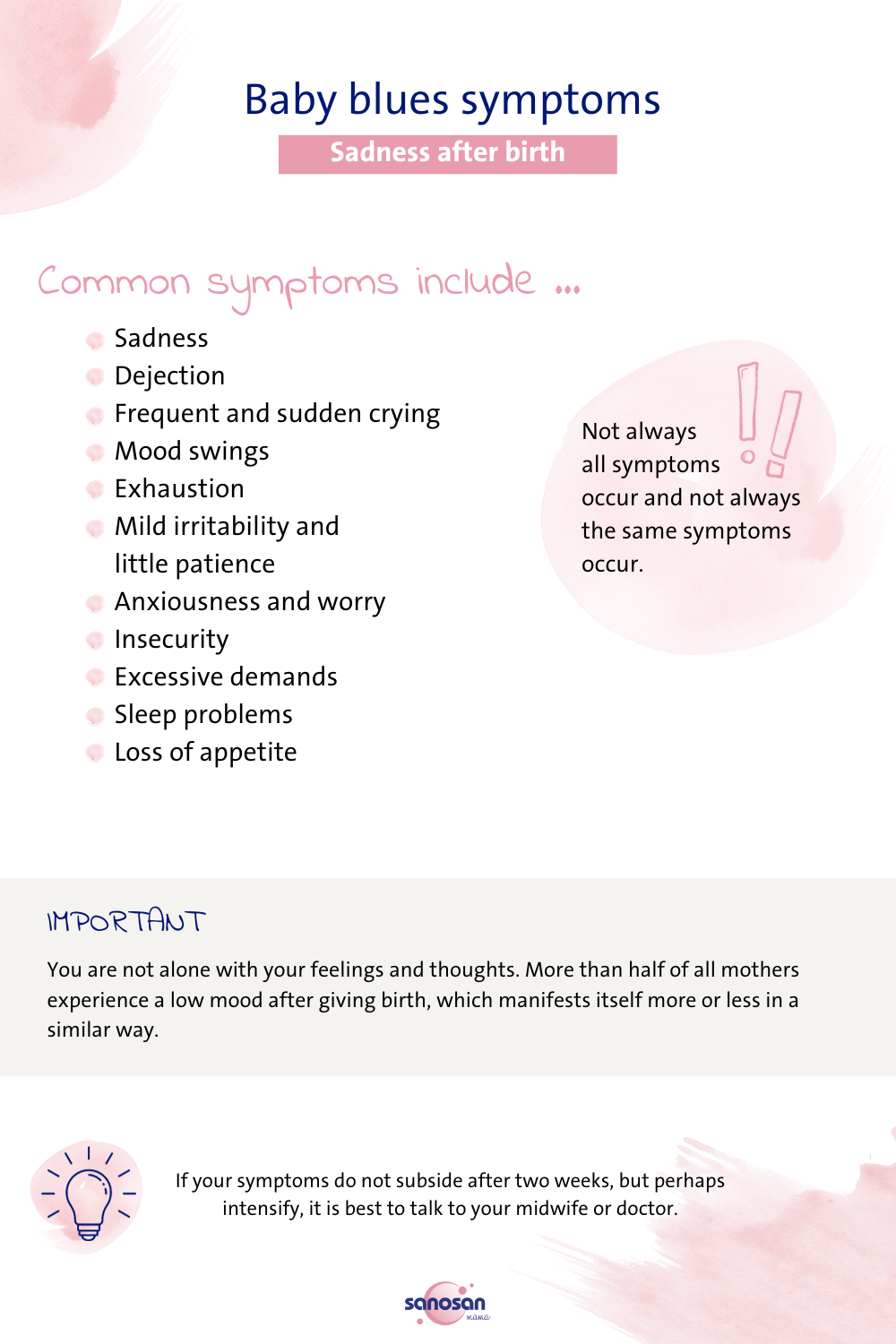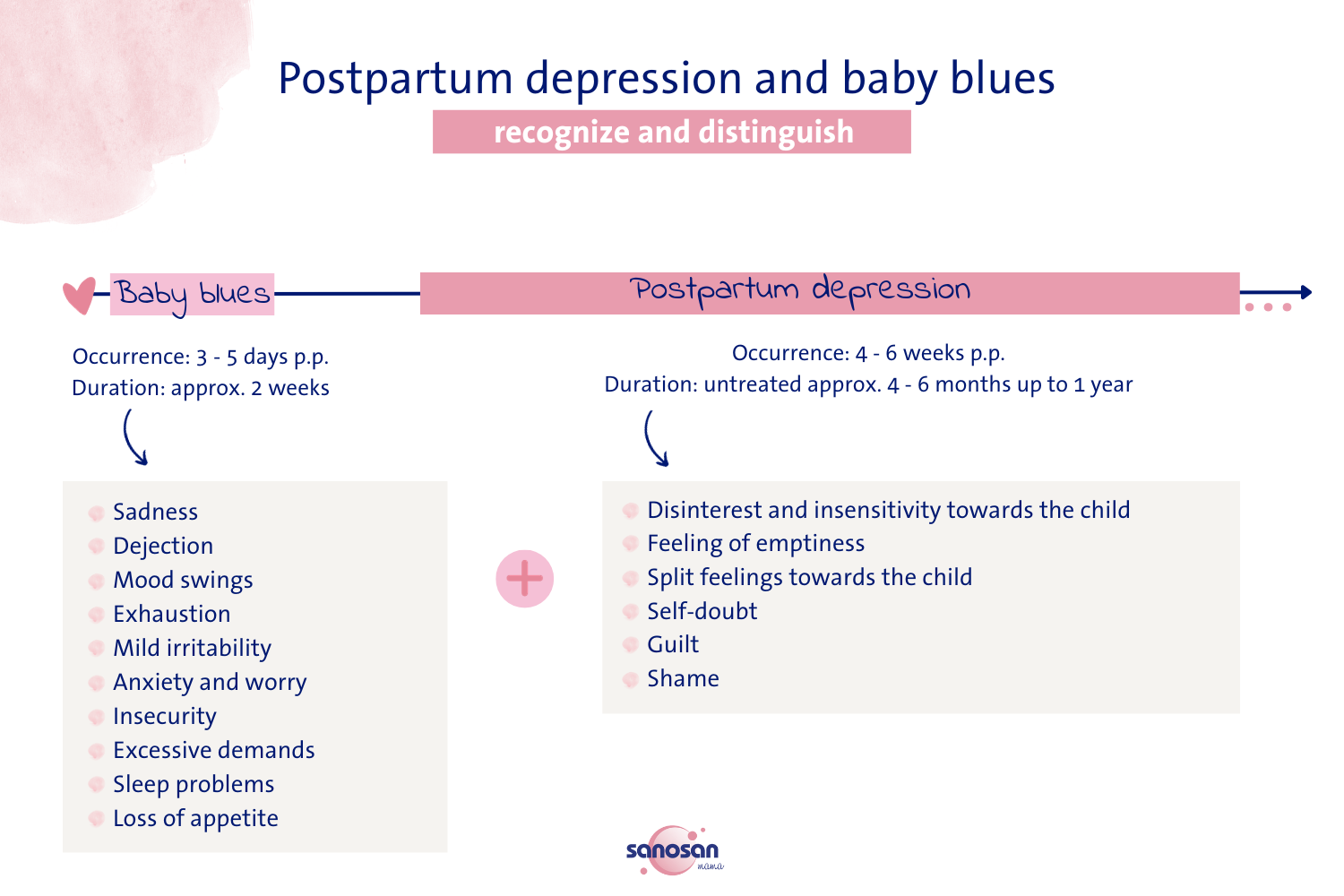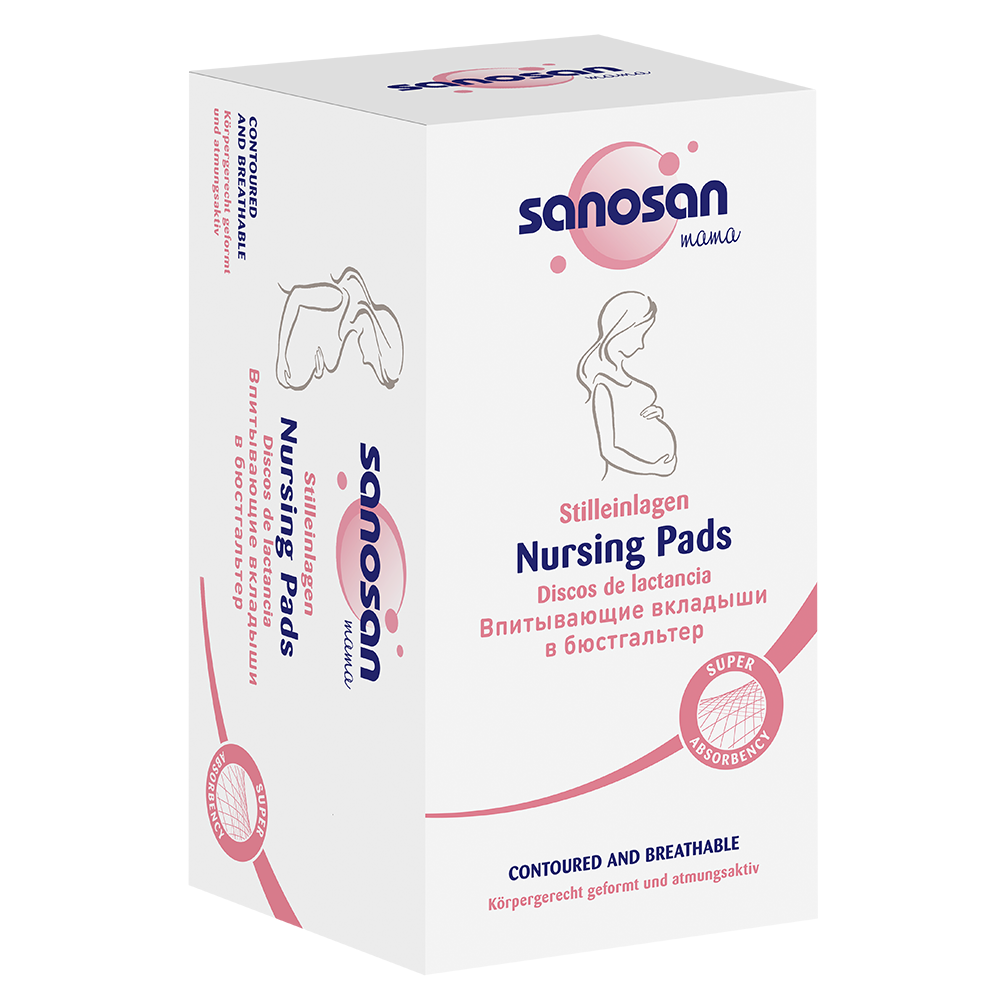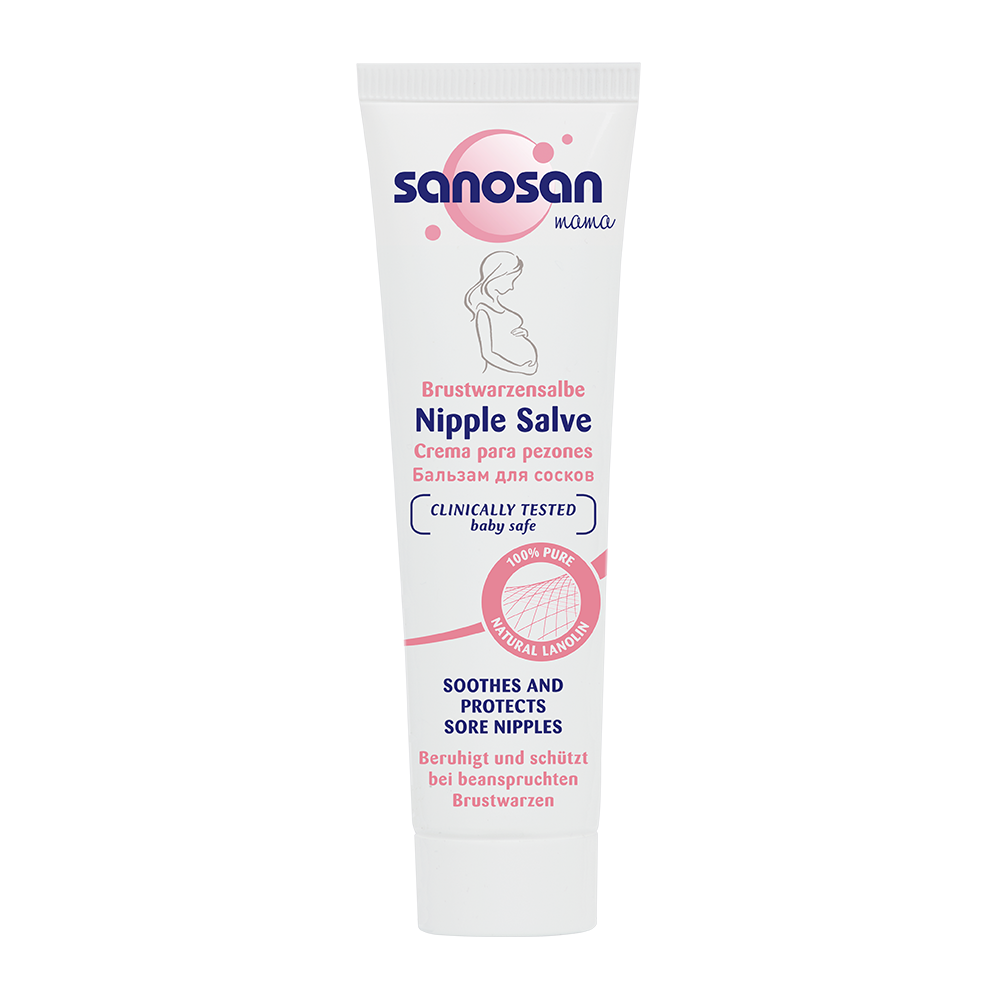The baby blues – Sadness after birth
The world turns upside down: the baby is finally here! And no matter how beautiful and exciting the first days after the birth may be, they are very often accompanied by another feeling: Sadness. Even if you don’t know exactly where these feelings come from, it is important that you are aware of the following: your feelings are okay and you are by no means alone!
What are baby blues?
Baby blues is medically referred to as postpartum blues and is a low mood that can occur after the birth of a child. About three out of four women develop some kind of baby blues after giving birth. This makes the baby blues the most common type of depressive mood – but at the same time, it is also the mildest form. It is interesting to note that the baby blues are often only mentioned in connection with mothers who have just given birth, but fathers can also develop a type of baby blues after giving birth. This is not at all rare. It is estimated that five to ten percent of men experience similar psychological symptoms as women after giving birth – but often unrecognized.
When can baby blues occur?
The baby blues usually occur in the first three to five days after delivery and usually do not last very long. After a few days, the symptoms should subside and the low mood should lift. The baby blues usually do not last longer than two weeks. If the low mood sets in later or lasts for several weeks, this may indicate that it is not baby blues but postpartum depression. We will explain how to recognize and distinguish between these two depressive moods later on.
What symptoms can occur?
The symptoms of baby blues can vary from person to person. They can also differ from birth to birth. One characteristic that is very common is the seemingly inexplicable sadness of those affected. In some cases, they also cry a lot and suddenly. Mood swings and anxiety are also among the most common symptoms.

Where can the baby blues come from?
Experts currently believe that the sharp drop in hormone levels of estrogen and progesterone after birth may be the trigger for the postpartum mood depression. Since estrogen in particular can have a stabilizing effect on mood, this could be a cause of the baby blues and the onset of mood swings or slumps.
Of course, other factors also have an influence on the occurrence of the baby blues. For example, the course of the birth can play a decisive role. Especially if the birth did not go as planned, there were complications or a very long, energy-sapping birth, this can promote the subsequent development of postpartum sadness. The support and attention given to new parents by their immediate environment can also play a role. Physical pain and injuries caused by the birth or possible breastfeeding problems are other stress factors that affect the mother after the birth.
What can you do if you have baby blues?
The last phase of pregnancy can be exhausting and the birth is also draining. New mothers already need a lot of rest and time to recover in the postpartum period. Rest and understanding become even more important for mothers who show symptoms of the baby blues. In addition to the closest environment, the midwife or doctor can also play a decisive role in providing support. They can ease worries, provide advice and offer helpful counseling.
Talking with a trusted person can also do a lot of good. Getting your thoughts and worries off your chest can be liberating, and the understanding offered can be uplifting. Also, don’t hesitate to ask for help if you feel overwhelmed in the early days – this is not a sign of weakness, but shows that you want to meet both your child’s needs and your own needs as a mom.
How can family members support you?
If someone in your close circle of acquaintances or family shows symptoms of the baby blues and signs of sadness after the birth, one thing above all is important: understanding! Try to understand where these feelings may be coming from and offer your support.
Here are a few tips on how you can support mothers (and fathers) with baby blues:
- Listen
For example, don’t ask about the child first, but about how the new parents are doing and take the time to listen to them. Show understanding for the feelings, concerns and thoughts of the other person.
- Actively plan time together
Schedule time with your partner just the two of you – this can provide relief and bonding and help you cope better with the new daily routine together.
- Offer your help
If it is a family member or close friend, you can offer to help around the house or bring over a cooked meal to support the parents.
- Encourage the person concerned
Mothers and fathers often have very high expectations of themselves, especially in the early days. Try to counteract these and encourage the parents that they are good parents and are taking great care of their child.
- Get professional help
If the symptoms do not subside after more than two weeks, you should support the affected person in contacting a medical professional. If the low mood lasts longer or becomes more intense, it may be postpartum depression.
How can you prevent baby blues?
More than half of all mothers are affected by baby blues after giving birth – shouldn’t there be a way to counteract postpartum sadness in advance? Unfortunately, not really. Since the drop in hormone levels is thought to be one of the main triggers and it is not possible to counteract this, there is no solution to prevent the baby blues. However, you can of course start thinking in advance about how you can provide relief for yourself and your partner in the first days after the birth.

TIP: You can already discuss in advance with close relatives how they could support you if you need it. You should also think together about how your life will change after the birth and what fears and worries you will associate with it. Open and honest communication is the cornerstone of mutual support – both before and after the birth.
Baby blues and postpartum depression – how do I tell the difference?
We have already pointed out in a few places that there is another type of postpartum depression besides the baby blues: postpartum depression. Since it is important to be able to distinguish between these two depressive moods or illnesses, we will give you a brief overview here.
What is postpartum depression?
Postpartum depression is also called postpartum depression and, like the baby blues, occurs in the period after birth. In this depressive disorder, for example, symptoms such as sadness, fatigue, sleep disturbances or feelings of guilt and shame can occur. Since the symptoms can be very similar to the symptoms of baby blues at first glance, it is important to deal with them more intensively in order to be able to distinguish between the two. If you would like to take a closer look at the topic of postpartum depression first, we have a detailed article for you here.
Distinguish baby blues and postpartum depression?
Whether it is a baby blues as a depressive mood depression or a postpartum depression as a clinical picture, you can initially recognize very well by the time of occurrence. While the baby blues usually set in during the first three to five days after birth, the first symptoms of postpartum depression usually begin during the first four to six weeks after delivery.
The duration also differs. The baby blues should have subsided after about 2 weeks. Postpartum depression varies greatly in how long it lasts. If left untreated, symptoms can last from about four to six months to a year.


IMPORTANT: Baby blues can develop into postpartum depression. Therefore, it is important to see a doctor if the symptoms of baby blues persist for more than two weeks.
Baby blues and postpartum depression can also be distinguished based on symptoms. While some symptoms of postpartum depression resemble baby blues, they usually differ in intensity. There are additional symptoms, such as strong feelings of guilt and shame, lack of interest in the child, or an inner feeling of emptiness. Postpartum depression is therefore not a depressive mood, but a depressive illness that needs to be treated.
When should you seek professional help?
As soon as the symptoms of baby blues persist for more than two weeks, intensify or even start a few weeks after the birth, you should seek help or encourage the person affected to seek help. In the first step, this can also be a trusted person with whom you first talk about your feelings. However, in the case of postpartum depression, professional help is crucial for healing, which is why you should always seek to talk to a doctor or midwife.
In addition to the baby blues and postpartum depression, there is also another form of postpartum depressive disorder: postpartum psychosis. This is a more severe mental illness in which there may also be a loss of reality or hallucinations. The trigger here can be a traumatic birth, for example. Here, too, medical treatment is imperative, as this is the only way to ensure a diagnosis with appropriate help and treatment – this is crucial for the well-being of mother and child.

IMPORTANT: Do not self-diagnose or get lost in fear. If you have worries and concerns, talk directly to your midwife or doctor. They will not only be able to help you, but also take away your fears and ease your doubts.
As you can see, moments of sadness in the first days after birth are completely normal and affect most new mothers. Talk about your feelings, give your body time and be patient with yourself. If you are not feeling better after two weeks, talk to your doctor – they know what it takes to make you feel well soon.
Most importantly, take care of yourself!








Comments (0)